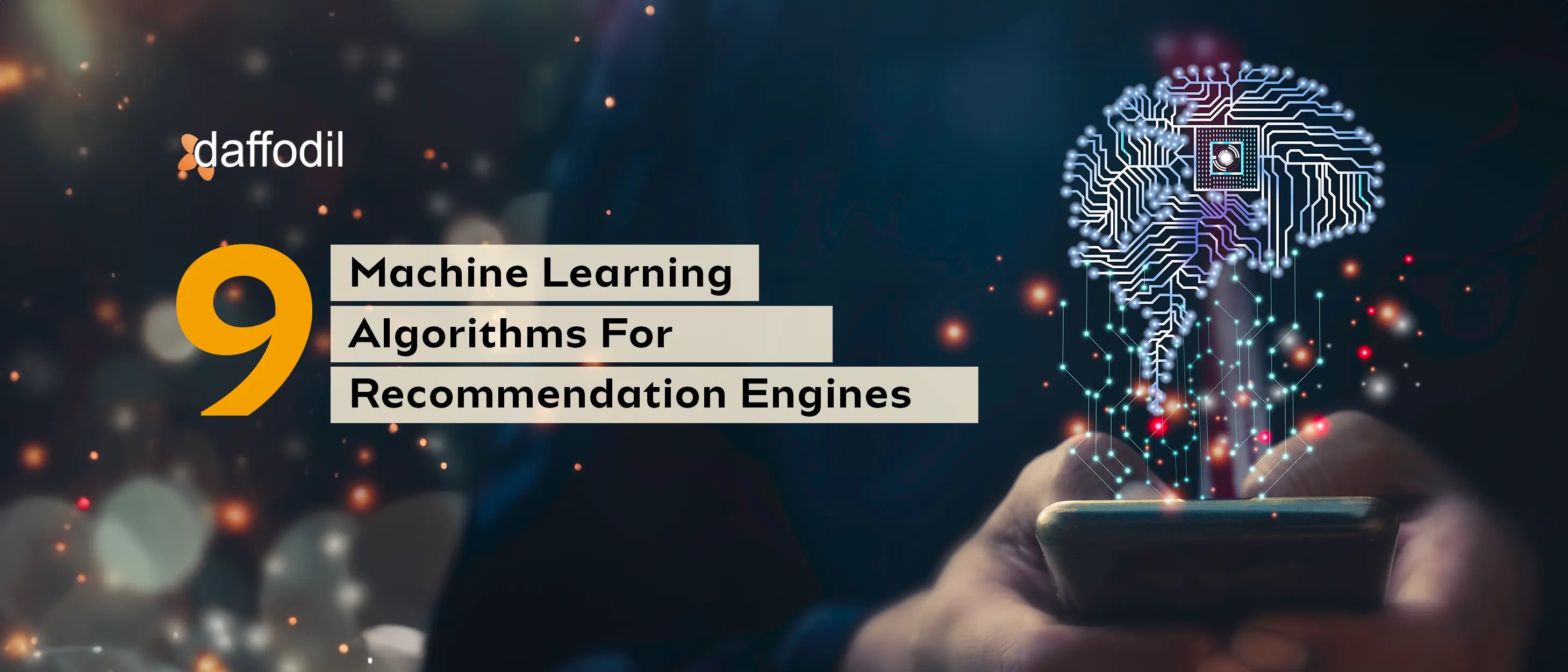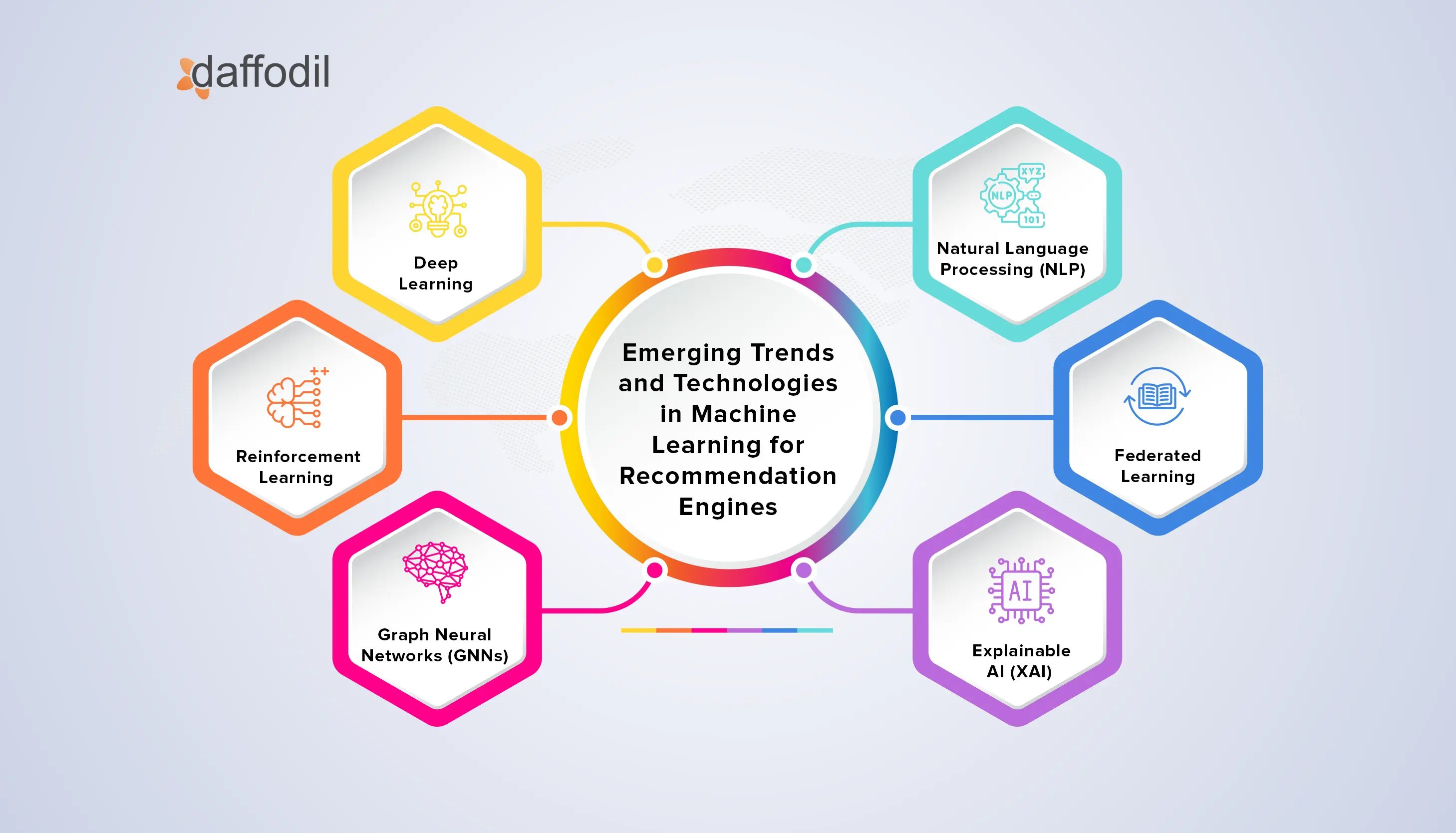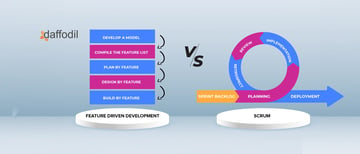
Recommendation engines stand as the backbone of personalized online experiences, guiding users to discover content, products, and services that meet their preferences. From driving online shoppers to their next favorite product, or suggesting the next binge-worthy movie according to the viewer’s genre history, recommendation engines are the hidden force behind driving user-preferred actions on digital platforms.
This blog post dives deeper into various machine learning algorithms that drive these recommendation engines, as well as the technical aspects that should be undertaken while implementing machine learning algorithms for different digital platforms.
What is a Recommendation Engine?
A recommendation engine is a complex technology that presents people with products, services, or information based on data analysis. It applies algorithms to filter and forecast possibilities that are consistent with a user's preferences and behaviors. The engine provides tailored suggestions by assessing prior interactions, such as purchases or watching history, and taking into account comparable user profiles. Recommendation engines, which are commonly used in e-commerce, streaming services, and social media, improve user experiences by assisting consumers in identifying new items and content that they are likely to appreciate, hence generating engagement and revenue for businesses.
What are the Top 9 Machine Learning Algorithms for Recommendation Engines?
Several machine-learning techniques have been created to increase the accuracy and efficiency of these engines. Some of the top machine-learning algorithms used for recommendation engines are outlined below:
.webp?width=1700&height=1350&name=Infographics_17%20(2).webp)
1) Collaborative Filtering Algorithms:
- User-Based Collaborative Filtering: User-based collaborative filtering is a technique used in recommendation systems to forecast a user's interests by aggregating preferences or taste information from several users. This method's basic assumption is that if a user A and B have the same view on an issue, A is more likely to have B's opinion on a different problem than a random user. In practice, this entails identifying people with similar tastes or rating patterns to the target user and then proposing goods that these similar users have enjoyed or highly rated.
- Item-Based Collaborative Filtering: Item-based collaborative filtering is similar to user-based filtering, except it focuses on the relationships between objects. It operates on the assumption that if people agree on the quality or relevance of one thing, they are likely to agree on the quality of other items as well. The algorithm will recommend things that are similar to those that the user has previously liked or rated highly.
- Model-Based Collaborative Filtering: Model-based collaborative filtering entails creating a prediction model to provide suggestions. This model is trained on user-item interactions and can estimate a user's rating for an unknown item. Machine learning techniques are used to forecast consumer preferences.
2) Content-Based Filtering Algorithms:
- Feature Extraction Techniques: These methods include examining the qualities of a product to recommend other products with comparable features. Common methods are TF-IDF for text and CNNs for image features.
- Profile Learning Methods: In this method, the algorithm constructs a user's preference profile based on the characteristics of the things with which they have engaged. Machine learning algorithms are then used to predict a user's preference for new products. Approaches to profile learning include Decision trees, Naive Bayes Classifier, Neural Networks, Support Vector Machines (SVM), and Regression Models
3) Matrix Factorization Techniques:
- Latent Factor Models: Models such as Singular Value Decomposition (SVD) and SVD++ splits the user-item interaction matrix into lower-dimensional matrices, gathering latent components that represent underlying user preferences and item characteristics.
- Alternating Least Squares (ALS): ALS is commonly used in collaborative filtering that is effective with implicit feedback datasets. It alternates between fixing the user factors and solving for the item factors, and vice versa, to reduce the recommendation error.
4) Hybrid Models:
- Hybrid recommendation systems use multiple recommendation techniques to overcome the limitations of a single strategy. A hybrid approach, for example, can employ collaborative filtering to tap into the wisdom of the community while simultaneously including content-based filtering to solve the cold start problem (new users or objects with no interaction history). Combining these strategies allows the algorithm to make more accurate and tailored suggestions. For example, Netflix uses a hybrid method that includes complex algorithms that use user ratings, viewing patterns, and the qualities of movies and series to give tailored content suggestions.
5) Deep Learning Approaches:
- Neural Collaborative Filtering: This method uses neural network architectures to describe complicated user-item interactions. It frequently outperforms ordinary matrix factorization by capturing nonlinear interactions.
- Autoencoders for Recommendations: Autoencoders can be used to create compressed representations of user preferences or object characteristics. These compressed features can then be utilized to model user-item interactions to provide recommendations.
- Recurrent Neural Networks (RNNs): RNNs can leverage consecutive interactions, such as a user's browsing or purchasing history, to forecast what the user will want next.
- Convolutional Neural Networks (CNNs): CNNs can be used in recommendation systems by considering the user-item matrix as an image and learning local patterns within that "image."
ALSO READ: CNN vs. RNN: What's the Difference?
6) Association Rule Mining:
- Association rule mining is a rule-based machine learning method to identify interesting relationships between variables in large datasets. Algorithms such as Apriori and Eclat seek subsets of items that appear together in transactions more frequently than is predicted by chance, providing rules that may be used to recommend more items to the customer.
7) Reinforcement Learning:
- Reinforcement learning in recommendation systems can continually learn from user interactions in order to optimize the suggestion strategy. The system analyzes and implements various strategies to maximize a cumulative reward, which might be user clicks, sales, or satisfaction.
8) Knowledge-Based Systems:
- These systems rely on explicit information about users and items, rather than on historical data. They are especially beneficial for proposing complex items like financial services or high-ticket products if the user's requirements are explicit and well defined.
9) Ranking Algorithms:
- Learning to rank is a sort of supervised machine learning in which models are created to predict the order of a set of objects for a certain user. These algorithms are especially essential when the system wants to prioritize suggestions based on user engagement or satisfaction.
What are the Benefits of Using Recommendation Engines?
Machine learning algorithms have revolutionized the recommendation process in various industries. It has led to a more engaging and satisfying user experience. Let’s find out how it is helping these industries:
- Personalized Content Availability: To enhance the user experience and customer satisfaction, machine learning algorithms analyze users’ behavior, preferences, and history to provide personalized recommendations.
- Sales & Revenue Growth: By providing more relevant recommendations, businesses can increase conversion rates, average order values, and customer retention. This leads to higher revenue and a better return on investment for recommendation system development.
- Right product at the right time: For the improvement of accuracy the machine learning models can detect complex patterns and relationships within the data that might not be apparent through manual analysis or simpler algorithms. For accurate recommendations we can use various techniques such as collaborative filtering, content-based filtering, and hybrid approaches, these models can provide highly accurate recommendations.
- Scalability: For large & dynamic datasets it would not be possible to scale with traditional recommendation processes, here, machine learning algorithms can manage large datasets much more efficiently to provide recommendations to users for various products and content based on their preferences.
- Real-time Recommendation: A user adding items to the shopping cart and at the same time getting suggestions for the other products based on the item added can increase user interaction. Machine learning models can update the recommendations based on real-time user interactions.
- Automation: To reduce manual intervention so that the teams can focus more on strategic decisions, machine learning automates the process of updating & maintaining the recommendation systems.
The Future of Recommendation Engines with Machine Learning
Many online platforms, including e-commerce, streaming, and social networking, rely heavily on recommendation algorithms. They assist to customize the user experience by recommending items, content, or relationships that the user is likely to be interested in. As machine learning (ML) evolves, recommendation engines become more complex and effective. Platforms like EssayPro also benefit from these systems by personalizing writing service suggestions based on user preferences. Let's look at the future of recommendation engines using machine learning, including upcoming trends and technology, potential consequences, and ethical issues.
What are the Emerging Trends and Technologies in Machine Learning for Recommendation Engines?

- Deep Learning: Deep learning methods, particularly neural networks, have gained popularity in recommendation systems. These models can capture complicated user-item interactions, hence improving recommendation quality.
- Reinforcement Learning: Reinforcement learning is being utilized to develop dynamic recommendation systems that can respond to user feedback in real-time, maximizing long-term user engagement and satisfaction.
- Graph Neural Networks (GNNs): GNNs excel in exploiting data's relational structure, such as the relationships between users and objects, to improve recommendation accuracy.
- Natural Language Processing (NLP): NLP can be used to evaluate user reviews and product descriptions, allowing recommendation engines to comprehend user sentiment and provide more reliable suggestions.
- Federated Learning: This strategy enables machine learning models to be trained on decentralized devices, respecting user privacy while enhancing the performance of the recommendation engine.
- Explainable AI (XAI): As recommendation systems become more complex, there is an increasing demand for explainability. XAI intends to make the decision-making process of AI models more transparent and understandable for users.
ALSO READ: Top 15 Pre-Trained NLP Language Models
Final Thoughts
In a nutshell, recommendation engines supported by machine learning algorithms have become vital in the digital age, greatly improving user experiences and driving corporate growth. These engines not only tailor content for consumers but also assist businesses in strategically managing content distribution and gaining essential information about users' behavior. Machine learning has evolved from simple collaborative filtering to complex deep learning and hybrid models, addressing essential difficulties such as scalability, real-time suggestions, and dealing with sparse data.
As technology advances, we can expect increasingly complex, context-aware, and user-centric recommendation systems that not only fulfill but anticipate users' requirements and preferences, resulting in a more engaging and recognizing relationship with digital platforms.
If you want to develop a custom recommendation engine for your application, schedule a no-obligation consultation with our AI/ML specialists now!




